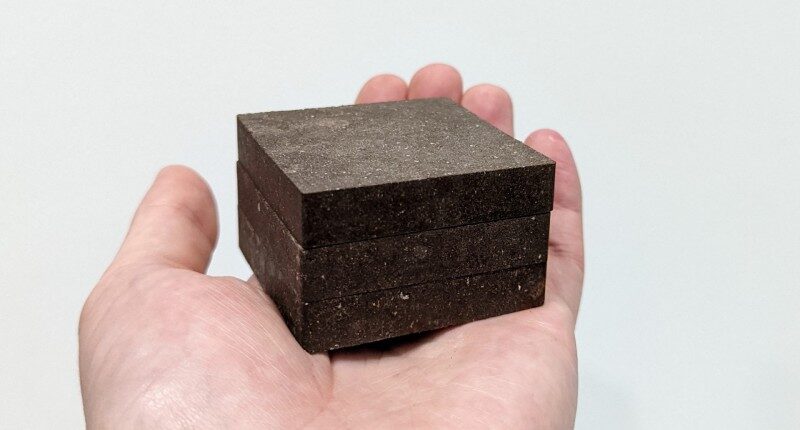MARS settlers of the future could live and work inside potatoes – sort of.
Rather, astronauts would be spending their Martian days inside buildings made of ‘StarCrete’ – a futuristic material derived from potato starch.
The revolutionary new material could be created on Mars as a quick and cheap solution to create a red planet colony.
Scientists behind StarCrete say their recipe of extra-terrestrial dust, potato starch and a pinch of salt could trump other building materials.
The tater-tastic StarCrete is said to be twice as strong as ordinary concrete, and relies on simple materials.
“Since we will be producing starch as food for astronauts, it made sense to look at that as a binding agent rather than human blood,” said Dr Aled Roberts, of the UK’s University of Manchester, who led the research.
“Also, current building technologies still need many years of development and require considerable energy and additional heavy processing equipment which all adds cost and complexity to a mission.
“StarCrete doesn’t need any of this and so it simplifies the mission and makes it cheaper and more feasible.”
The researchers were able to show that potato starch acts as a binder with Martian dust.
This produces a concrete-like material with a “compressive strength” of 72 MPa (megapascals) – compared to concrete’s 32 MPa.
Most read in News Tech
It’s a welcome breakthrough after previous studies tested using astronauts’ blood and urine as the binding agent.
The use of potato starch resulted in a stronger material – and one that is far less disgusting.
A 25-kilo sack of dehydrated potatoes has enough starch to create half a tonne of StarCrete, according to research published in the journal Open Engineering.
That’s roughly equivalent to over 213 bricks.
Scientists say a three-bedroom house requires around 7,500 bricks – so that’s a lot of taters.
A common Martian salt – magnesium chloride – also improves the strength of StarCrete.
Sadly, the downside is that scientists still need to find a way to reliably grow potatoes on Mars.
These super space potatoes may still be years away, but Mars settlers will need to find a way to produce food on the red planet if a permanent colony is to become sustainable.
Scientists are now working on testing StarCrete as a building material on Earth, in hopes that it can one day be used for off-planet construction.
Excitingly, scientists say that the material could also be used for lunar construction – with the Moon dust version of StarCrete being potentially even stronger.


Nasa hopes to establish a permanent base on the Moon’s South Pole within a decade.
The space agency also has plans for a manned trip to Mars – but a permanent colony is years away.









